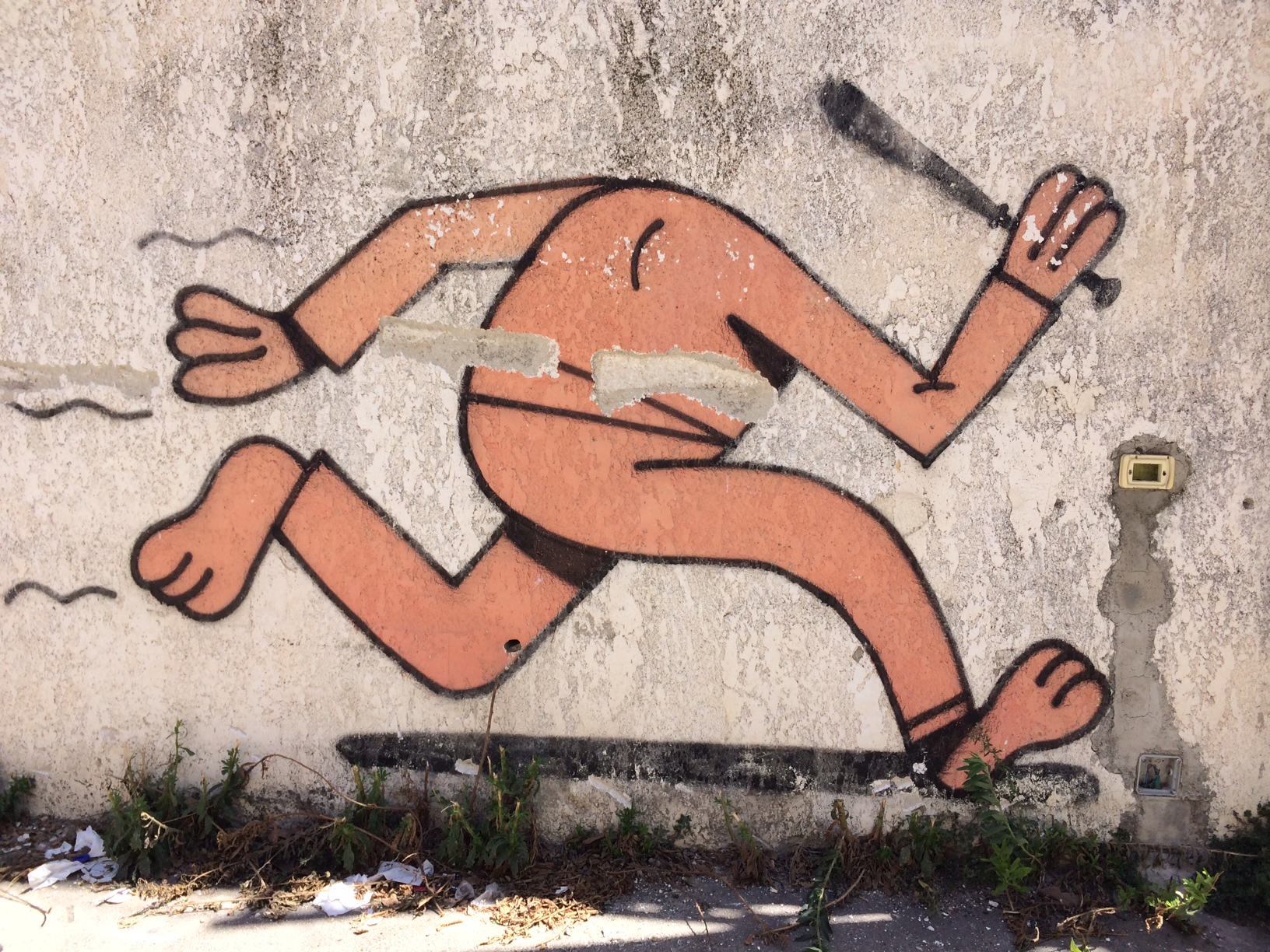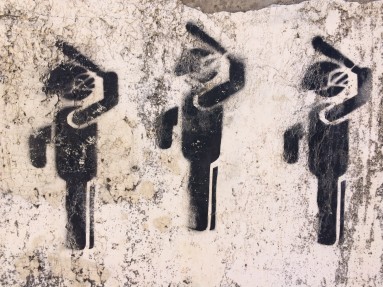"It cannot be neglected that the mythology of the democratic polity avidly recounts the heroic combat against the police agents of the old order. But even if the police officer of today did not evoke the images of the past at all, he would still be viewed with mixed feelings. For in modern folklore, too, he is a character who is ambivalently feared and admired, and no amount of public relations work can entirely abolish the sense that there is something of the dragon in the dragon slayer." (Egon Bittner, The Functions of the Police in Modern Society, 1970)
Late last year I started a series called "The Thick Blue Line," based on documented, widespread, and ongoing police impunity in the United States. At the end of each month (here are the first, second, and third installments) I compiled national "no charges against police officer" cases verbatim from reported incidents. A one-person operation, the sheer register of unchecked violence at the hands of police—assault, rape, battery, killing—became logistically and spiritually overwhelming. That such wanton state violence goes unchecked indefinitely—forever ever, forever ever?—remains among the most taxing facts of modern life. Of course I was far from the only person to keep a register, as such efforts include a 2011-2013 statistical summary of "police involved shootings," a crowdsourced national database of police killings, and a more recent database of police-involved shootings. And efforts to organize legal, psychological, and medical support to victims of police violence are innumerable and severely underhyped; let them not go unmentioned here.
While the headlines and press accounts are jackhammered into history with the tone of "objective" reporting (encounter it enough times and "no charges against police officer" morphs from reportage into eery command) the details of single incidents slink darkly into your consciousness. I cannot forget the Roswell, New Mexico police killing of Cody Towler, on whom police discharged at least four tasers. Towler's heart stopped, and his death was ruled a homicide ("the level of stress on his body from the tasers and the restraints was just too much"). He was allegedly holding a baton when police found him, a detail I mentally note whenever the descriptor unarmed is deployed, the insinuation being that to be "armed" is to lose your capacity for an "innocent" death. I cannot forget the killing of Eugene Mallory, an 80-year old retiree who was shot and killed in his bedroom by the Los Angeles County Sheriff's Department. They claimed to be looking for meth. None was found in Mallory's home. And I cannot forget Kim Nguyen's kidnapping, sexual assault, and near-death experience at the hands of two uniformed members of the Los Angeles Police Department. In the struggle to free herself from the officers who handcuffed her in the backseat of their cruiser and attempted to rape her, Nguyen was thrown at high velocity from the car. She lost all her teeth from the impact and spent two weeks in the hospital. Neither officer was taken off the field and both "continue to patrol the streets pulling over women for alleged traffic violations." The summer of 2014 was a deluge of death with the police killings of Ezell Ford, Eric Garner, John Crawford III, and Michael Brown. Each of their deaths—and let the preciousness of their lives be counted with every mention—dug up the scars of carceral regimes past, the ones that yielded the not-strictly-speaking-police killings of Troy Davis, Trayvon Martin, Renisha McBride, and others, and others, and others.
In a previous essay (on, among other things, the final photograph taken by Oscar Grant, militant suffragettes, and North by Northwest) I discussed the police as the entity endowed with the power of ordering space. That came about when efforts to dig up a theory of the police in critical scholarship, particularly sociology, came up wanting.
Bittner, the most prominent police theorist of his time, cast them as tainted by that which they fight ("there is something of the dragon in the dragon slayer"). While an attractive idea psychologically, that line of thinking foregoes the idea that the "bad guys" are never endowed with the same impunity as the "good" police guys. It also inadequately considers that "several truths about the police [can] coexist," as I discussed in another essay. #NotAllCops liberal discourses, where the police's capacity for "good works" are seen to negate their provenance, still abound. (It goes without saying that police are far from the only major players in modern criminalization: the power of U.S. courts and corrections therein is staggering.)
But the police impunity chronicles had the effect of pushing me further beyond not just the sociological premise of the police as rightful heirs to force nor even my own prior casting of the police as architects/guardians of space. The more one pays attention to the conspiratorial way (and I mean conspiracy factually, as in a plot that has a familiar narrative end) that police walk away scot-free from the storm of violence they enact the more one reaches toward a higher definitional value. The police are defined by the power to kill with impunity, period. The police are the killing class. And it is in clarifying, not reducing, that existential value that the "theory" can become generative and useful beyond the mole-like venues of the "local" or "municipal" or "federal." In Palestine, where I am currently living and from where I continue to watch Ferguson unfold with urgency, the IDF is both "foreign" occupation regime and "local" police force, maiming and eradicating human beings with impunity.
If the police are supremacists in the act of impunity, the work of the righteous is organized opposition to that supremacy. The 2014 Summer of Death was unfathomably chilling. I feel its traumatic aftereffects both on those immediately around me and those at a digital-intimate distance. But the steadfastness of survivors, and the daily effort to maintain one's self and community safe and alert, keeps the plight of deadening disillusionment at bay and solidarity and mutual respect deeply alive.

